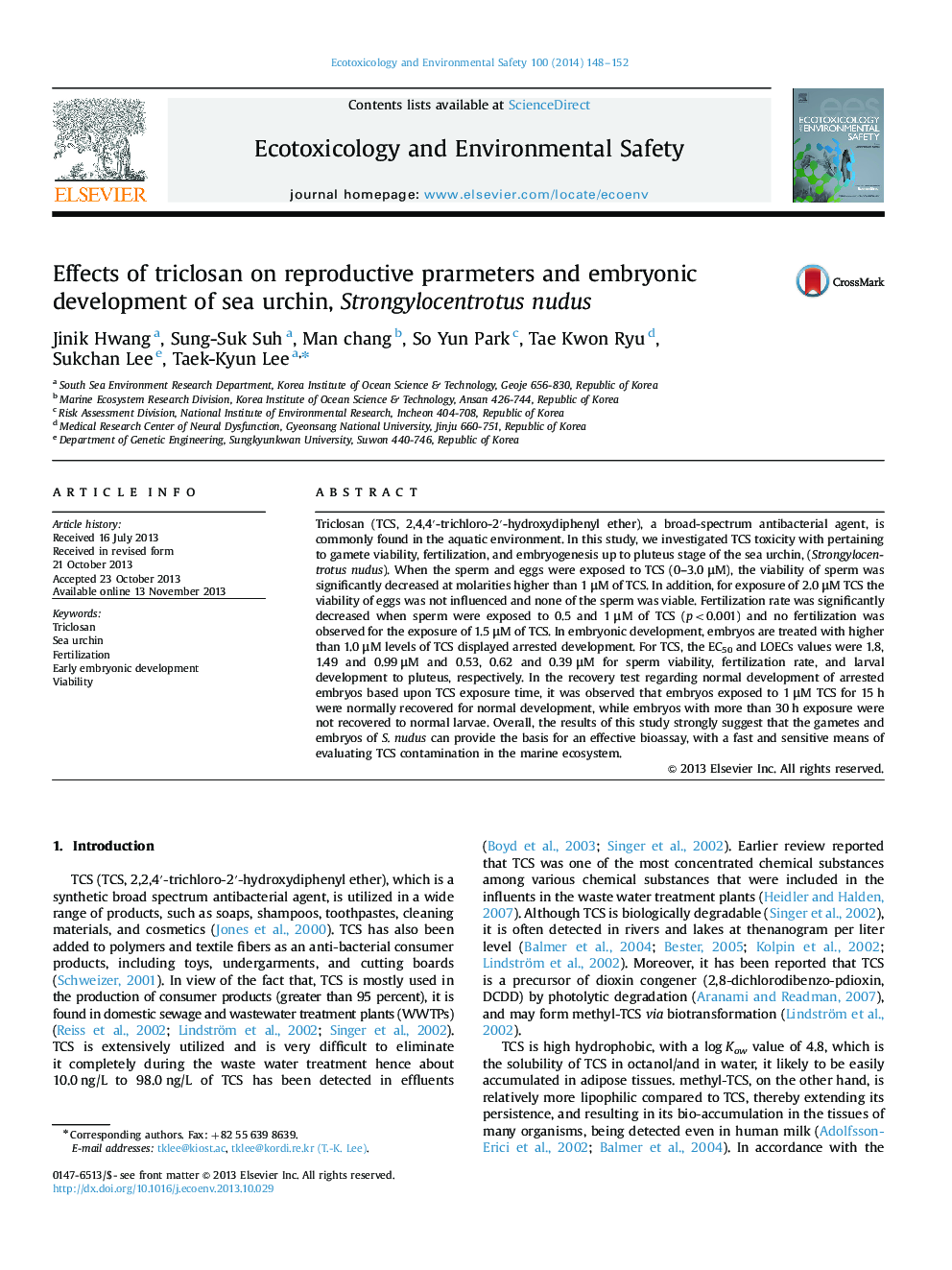| کد مقاله | کد نشریه | سال انتشار | مقاله انگلیسی | نسخه تمام متن |
|---|---|---|---|---|
| 6312229 | 1618963 | 2014 | 5 صفحه PDF | دانلود رایگان |
عنوان انگلیسی مقاله ISI
Effects of triclosan on reproductive prarmeters and embryonic development of sea urchin, Strongylocentrotus nudus
دانلود مقاله + سفارش ترجمه
دانلود مقاله ISI انگلیسی
رایگان برای ایرانیان
کلمات کلیدی
موضوعات مرتبط
علوم زیستی و بیوفناوری
علوم محیط زیست
شیمی زیست محیطی
پیش نمایش صفحه اول مقاله

چکیده انگلیسی
Triclosan (TCS, 2,4,4â²-trichloro-2â²-hydroxydiphenyl ether), a broad-spectrum antibacterial agent, is commonly found in the aquatic environment. In this study, we investigated TCS toxicity with pertaining to gamete viability, fertilization, and embryogenesis up to pluteus stage of the sea urchin, (Strongylocentrotus nudus). When the sperm and eggs were exposed to TCS (0-3.0 μM), the viability of sperm was significantly decreased at molarities higher than 1 μM of TCS. In addition, for exposure of 2.0 μM TCS the viability of eggs was not influenced and none of the sperm was viable. Fertilization rate was significantly decreased when sperm were exposed to 0.5 and 1 μM of TCS (p<0.001) and no fertilization was observed for the exposure of 1.5 μM of TCS. In embryonic development, embryos are treated with higher than 1.0 μM levels of TCS displayed arrested development. For TCS, the EC50 and LOECs values were 1.8, 1.49 and 0.99 μM and 0.53, 0.62 and 0.39 μM for sperm viability, fertilization rate, and larval development to pluteus, respectively. In the recovery test regarding normal development of arrested embryos based upon TCS exposure time, it was observed that embryos exposed to 1 μM TCS for 15 h were normally recovered for normal development, while embryos with more than 30 h exposure were not recovered to normal larvae. Overall, the results of this study strongly suggest that the gametes and embryos of S. nudus can provide the basis for an effective bioassay, with a fast and sensitive means of evaluating TCS contamination in the marine ecosystem.
ناشر
Database: Elsevier - ScienceDirect (ساینس دایرکت)
Journal: Ecotoxicology and Environmental Safety - Volume 100, February 2014, Pages 148-152
Journal: Ecotoxicology and Environmental Safety - Volume 100, February 2014, Pages 148-152
نویسندگان
Jinik Hwang, Sung-Suk Suh, Man chang, So Yun Park, Tae Kwon Ryu, Sukchan Lee, Taek-Kyun Lee,